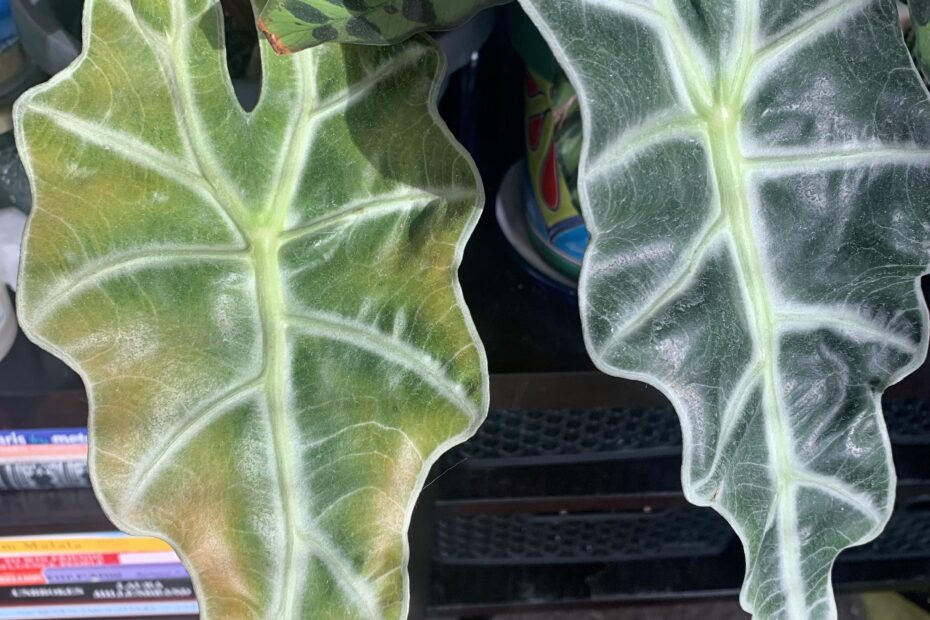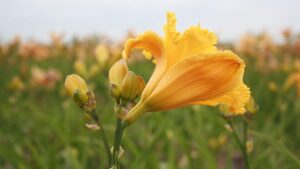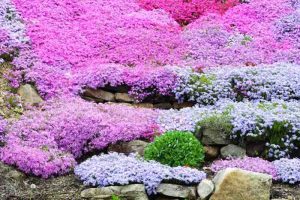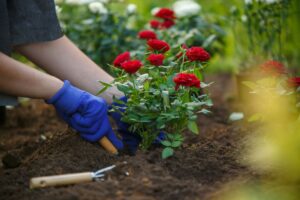Yellow Leaves on Alocasia? Treatment Tips You Need to Know
Alocasia, also known as elephant ear, is a popular houseplant that is known for its large, lush leaves. However, if your alocasia is experiencing yellow leaves, it may be a sign that something is wrong. In this article, we will discuss the causes of yellow leaves on alocasia and provide tips on how to treat the problem.
Causes of Yellow Leaves on Alocasia

There are a number of reasons why your alocasia may be experiencing yellow leaves. Some of the most common causes include:
- Watering problems: Alocasia plants need to be watered regularly, but not too much. If you overwater your alocasia, the roots will become waterlogged and the plant will start to yellow. Conversely, if you underwater your alocasia, the leaves will wilt and turn yellow.
- Sunlight exposure: Alocasia plants need bright, indirect sunlight to thrive. If your alocasia is not getting enough sunlight, the leaves will start to yellow. Conversely, if your alocasia is getting too much direct sunlight, the leaves will burn and turn yellow.
- Temperature problems: Alocasia plants prefer warm temperatures between 65 and 85 degrees Fahrenheit. If the temperature drops below 65 degrees Fahrenheit, the leaves will start to yellow. Conversely, if the temperature rises above 85 degrees Fahrenheit, the leaves will wilt and turn yellow.
- Nutrient deficiency: Alocasia plants need a number of nutrients to thrive, including nitrogen, phosphorus, and potassium. If your alocasia is not getting enough nutrients, the leaves will start to yellow.
- Pest infestation: Alocasia plants can be susceptible to a number of pests, including aphids, mealybugs, and spider mites. If your alocasia is infested with pests, the leaves will start to yellow and wilt.
Treatment Tips for Yellow Leaves on Alocasia
If your alocasia is experiencing yellow leaves, there are a number of things you can do to treat the problem. Here are a few tips:
- Check the watering schedule. If you think you may be overwatering or underwatering your alocasia, adjust your watering schedule accordingly. Make sure to water the plant deeply, but only when the top inch of soil is dry.
- Move the plant to a different location. If your alocasia is not getting enough or too much sunlight, move it to a spot where it will receive the appropriate amount of light.
- Adjust the temperature. If the temperature is too low or too high, move the plant to a location where the temperature is more suitable.
- Fertilize the plant. If your alocasia is not getting enough nutrients, fertilize it with a balanced fertilizer according to the package directions.
- Treat the plant for pests. If your alocasia is infested with pests, treat it with a pest control product according to the package directions.
By following these tips, you can help your alocasia recover from yellow leaves and enjoy its beautiful foliage for years to come.
Yellow Leaves on Alocasia? Treatment Tips You Need to Know
Alocasia is a genus of flowering plants that are native to tropical Asia and Australia. They are popular houseplants because of their large, colorful leaves. However, alocasia plants can sometimes develop yellow leaves. There are a number of reasons why this might happen, but the most common causes are:
- Overwatering: Alocasia plants are susceptible to root rot if they are overwatered. This can cause the leaves to turn yellow and eventually fall off.
- Underwatering: Alocasia plants also need to be watered regularly, but they can be more tolerant of underwatering than overwatering. If the leaves of your alocasia plant are turning yellow, it could be a sign that the plant is not getting enough water.
- Incorrect light conditions: Alocasia plants need bright, indirect light to thrive. If they are not getting enough light, their leaves may start to turn yellow.
- Nutrient deficiency: Alocasia plants need a balanced fertilizer to stay healthy. If they are not getting enough nutrients, their leaves may start to turn yellow.
If you think that your alocasia plant is developing yellow leaves because of one of these reasons, you can try to correct the problem by following these steps:
- Check the soil moisture: If the soil is dry to the touch, water the plant thoroughly. If the soil is wet, wait a few days before watering again.
- Adjust the light conditions: Move the plant to a location where it will receive more or less light, depending on what the problem is.
- Fertilize the plant: Apply a balanced fertilizer according to the package directions.
If you have tried these steps and the yellow leaves do not improve, you may need to take the plant to a nursery or garden center for further diagnosis and treatment.
What Causes Yellow Leaves on Alocasia?
What Causes Yellow Leaves on Alocasia?
Alocasia leaves can turn yellow for a variety of reasons, including:
- Watering issues: Alocasia plants need to be watered regularly, but they should not be overwatered. If the soil is too wet, the roots can rot, which will cause the leaves to turn yellow.
- Drought stress: Alocasia plants also need to be watered regularly, but they should not be allowed to dry out completely. If the soil is too dry, the leaves will wilt and turn yellow.
- Sunburn: Alocasia plants prefer bright, indirect light. If they are exposed to too much direct sunlight, the leaves can burn, which will cause them to turn yellow.
- Temperature extremes: Alocasia plants prefer warm temperatures, but they can be damaged if the temperature gets too hot or too cold. If the temperature is too high, the leaves will wilt and turn yellow. If the temperature is too low, the leaves will turn brown and fall off.
- Nutrient deficiencies: Alocasia plants need a variety of nutrients to stay healthy. If they are not getting enough nutrients, the leaves will turn yellow.
- Diseases and pests: Alocasia plants can be affected by a variety of diseases and pests, which can cause the leaves to turn yellow.
If you are not sure what is causing the yellow leaves on your Alocasia plant, it is best to consult with a professional horticulturist.
How to Treat Yellow Leaves on Alocasia
How to Treat Yellow Leaves on Alocasia
Alocasia is a genus of flowering plants that includes over 70 species.
They are popular houseplants because of their large, attractive leaves. However, alocasia plants can sometimes develop yellow leaves. There are a few different reasons why this might happen, and the treatment will vary depending on the cause.These plants are native to tropical regions of Asia, Africa, and Australia..
Here are some of the most common causes of yellow leaves on alocasia plants:
- Overwatering: Alocasia plants are susceptible to root rot if they are overwatered. This can cause the leaves to turn yellow and eventually fall off. To avoid overwatering, make sure to only water the plant when the soil is dry to the touch.
- Underwatering: Alocasia plants also need to be watered regularly, but they can also suffer if they are underwatered. This can cause the leaves to wilt and turn yellow. To avoid underwatering, water the plant deeply once a week, and then let the soil dry out completely before watering again.
- Too much sun: Alocasia plants prefer bright, indirect light. If they are exposed to too much direct sunlight, the leaves can burn and turn yellow. To avoid this, place the plant in a spot where it will receive bright, indirect light for most of the day.
- Too little light: Alocasia plants also need some sunlight in order to thrive. If they are not getting enough light, the leaves can become pale and yellow. To avoid this, place the plant in a spot where it will receive at least 6 hours of direct sunlight per day.
- Nutrient deficiency: Alocasia plants need a balanced fertilizer to thrive. If they are not getting enough nutrients, the leaves can turn yellow. To avoid this, fertilize the plant once a month with a balanced fertilizer.
Here are some tips for treating yellow leaves on alocasia plants:
- If you think the problem is overwatering, reduce the amount of water you are giving the plant. Let the soil dry out completely between waterings.
- If you think the problem is underwatering, water the plant more frequently. Water the plant deeply once a week, and then let the soil dry out completely before watering again.
- If you think the problem is too much sun, move the plant to a spot where it will receive bright, indirect light. Avoid placing the plant in direct sunlight.
- If you think the problem is too little light, move the plant to a spot where it will receive at least 6 hours of direct sunlight per day.
- If you think the problem is a nutrient deficiency, fertilize the plant with a balanced fertilizer. Fertilize the plant once a month with a balanced fertilizer.
By following these tips, you can help to treat yellow leaves on your alocasia plants and keep them healthy and beautiful.
Table of Contents
- What Causes Yellow Leaves on Alocasia Plants?
- How to Treat Yellow Leaves on Alocasia Plants
- Reduce Watering
- Water More Frequently
- Move the Plant to a Different Spot
- Fertilize the Plant
Preventative Measures for Yellow Leaves on Alocasia
Preventative Measures for Yellow Leaves on Alocasia
Alocasia plants are beautiful, but they can be susceptible to yellow leaves. Here are some preventative measures you can take to help keep your alocasia healthy and green:
- Water regularly. Alocasia plants need to be watered regularly, but not too much. Allow the soil to dry out slightly between waterings.
- Provide bright, indirect light. Alocasia plants need bright, indirect light to thrive. Avoid placing them in direct sunlight, as this can scorch their leaves.
- Use a well-draining soil mix. Alocasia plants do not like to sit in wet soil, so it is important to use a well-draining soil mix. You can add perlite or sand to your soil mix to help improve drainage.
- Fertilize regularly. Alocasia plants benefit from regular fertilization. Feed them with a balanced fertilizer once a month during the growing season.
- Repot as needed. Alocasia plants will eventually outgrow their pots. Repot them when the roots start to grow out of the drainage holes.
By following these preventative measures, you can help keep your alocasia healthy and green.
Table of Contents
- Water regularly
- Provide bright, indirect light
- Use a well-draining soil mix
- Fertilize regularly
- Repot as needed
When to Repot an Alocasia
# When to Repot an Alocasia
Alocasia plants are relatively easy to care for, but they do need to be repotted every few years. The best time to repot an alocasia is in the spring, when the plant is actively growing.
Here are a few signs that it’s time to repot your alocasia:
- The roots are starting to grow out of the drainage holes in the pot.
- The soil is compacted and no longer draining well.
- The plant is looking stunted or unhealthy.
To repot your alocasia, you will need:
- A new pot that is about 2 inches wider and deeper than the current pot.
- A well-draining potting mix.
- A watering can.
- A sharp knife or scissors.
- Remove the alocasia from its current pot. Gently loosen the soil around the roots and carefully lift the plant out of the pot.
- Inspect the roots. If the roots are healthy and white, you can proceed with repotting. If the roots are brown or black, they are damaged and you will need to cut them away with a sharp knife or scissors.
- Place the alocasia in the new pot. Fill the pot with potting mix until it is about 1 inch below the rim of the pot.
- Water the alocasia thoroughly. Be sure to water until the water drains out of the bottom of the pot.
- Place the alocasia in a warm, sunny spot. Water the alocasia regularly and fertilize it once a month with a diluted liquid fertilizer.
With proper care, your alocasia will thrive and will be a beautiful addition to your home for many years to come.
How to Water an Alocasia
How to Water an Alocasia
Alocasia plants are tropical plants that are native to the rainforests of Southeast Asia. They are known for their large, colorful leaves and their ability to tolerate a wide range of conditions. However, one of the most important factors in caring for an alocasia is watering.
How often should you water an alocasia?
The frequency of watering will depend on the climate and the type of soil that you are using. In general, alocasia plants should be watered when the top inch of soil is dry. However, you may need to water more frequently if the climate is hot and dry or if you are using a fast-draining soil.
How much water should you give an alocasia?
When you water an alocasia, it is important to give it enough water to thoroughly soak the roots. However, you should avoid overwatering, as this can lead to root rot. A good rule of thumb is to water until the water begins to drain out of the drainage hole in the pot.
What happens if you underwater an alocasia?
If you underwater an alocasia, the leaves will start to wilt and turn yellow. The plant may also stop growing.
What happens if you overwater an alocasia?
If you overwater an alocasia, the roots will start to rot. This can eventually kill the plant.
How to tell if your alocasia is underwatered or overwatered?
There are a few ways to tell if your alocasia is underwatered or overwatered.
- Underwatered: The leaves will start to wilt and turn yellow. The plant may also stop growing.
- Overwatered: The leaves will start to turn brown and mushy. The roots may also be black and mushy.
How to fix an underwatered alocasia
If you think your alocasia is underwatered, you can fix it by giving it a thorough watering. Make sure to water until the water begins to drain out of the drainage hole in the pot. You may also want to mist the leaves of the plant to help them stay hydrated.
How to fix an overwatered alocasia
If you think your alocasia is overwatered, you can fix it by taking the following steps:
- Remove the plant from the pot.
- Gently remove the soil from the roots.
- Inspect the roots for signs of rot.
- Cut away any roots that are black and mushy.
- Replant the plant in fresh soil.
- Water the plant sparingly for the next few weeks.
Conclusion
Watering an alocasia is important, but it is also important to avoid overwatering or underwatering. By following these tips, you can help your alocasia thrive.
Fertilizing Your Alocasia
Fertilizing Your Alocasia
Alocasia plants are heavy feeders and require regular fertilization to maintain their lush green foliage. The best time to fertilize your alocasia is in the spring and summer, when the plant is actively growing. You can use a balanced fertilizer, such as a 10-10-10 or 20-20-20 fertilizer, diluted to half strength. Apply the fertilizer to the soil around the plant, and water it in well.
How often should I fertilize my alocasia?
You should fertilize your alocasia every 2-4 weeks during the growing season. In the fall and winter, when the plant is dormant, you can reduce fertilization to once a month or less.
What if my alocasia leaves are yellowing?
Yellowing leaves can be a sign of a number of problems, including underwatering, overwatering, or nutrient deficiency. If you think your alocasia is not getting enough water, increase the frequency of your watering. If you think your alocasia is overwatered, let the soil dry out completely before watering again. If you think your alocasia is suffering from a nutrient deficiency, you can try fertilizing it with a fertilizer that is higher in the nutrients that are lacking.
Here is a table of common alocasia fertilizer deficiencies and their symptoms:
| Nutrient Deficiency | Symptoms |
|---|---|
| Nitrogen | Yellowing leaves |
| Phosphorus | Slow growth |
| Potassium | Brown leaf tips |
| Iron | Chlorosis (yellowing between veins) |
| Magnesium | Chlorosis (yellowing between veins) |
| Calcium | Necrosis (dead tissue) |
| Boron | Tip dieback |
| Zinc | Interveinal chlorosis (yellowing between veins) |
If you are not sure what is causing the yellowing leaves on your alocasia, it is best to consult with a qualified horticulturist.
Resources
1. Alocasia Yellow Leaves: Causes and Treatment
2. How to Fix Yellow Leaves on Alocasia
In Summary
Outro
Yellow leaves on alocasia can be a sign of a number of problems, but with the right care, you can usually get your plant back to its healthy green self. By following the tips in this article, you can help your alocasia thrive and enjoy its beautiful foliage for years to come.
Here are some additional tips for caring for your alocasia:
- Water your alocasia regularly, but make sure not to overwater it. The soil should be moist but not soggy.
- Fertilize your alocasia monthly with a balanced fertilizer.
- Repot your alocasia every few years as it grows.
- Provide your alocasia with bright, indirect light.
- Mist your alocasia regularly to help it stay hydrated.
By following these tips, you can help your alocasia thrive and enjoy its beautiful foliage for years to come.
- Cat Palm vs Majesty Palm: Which Should You Choose? - June 30, 2024
- Flowers That Survive Winter: Discover the Exceptional No. 5 - June 30, 2024
- The Ultimate Guide to the Growth and Care of the Black Pagoda Lipstick Plant - June 29, 2024





